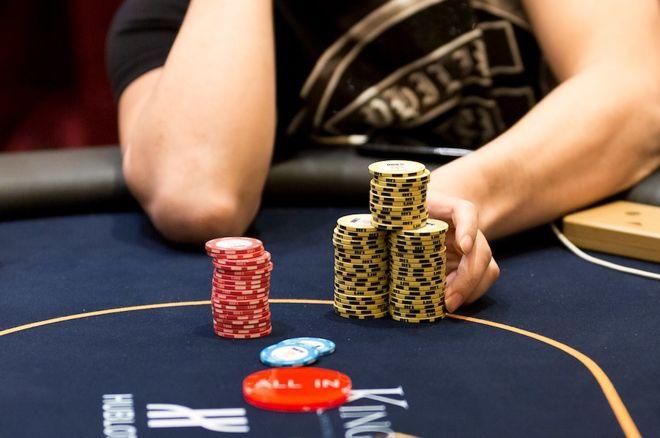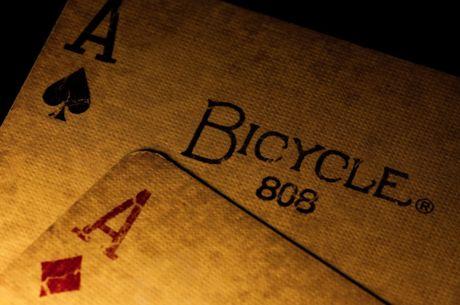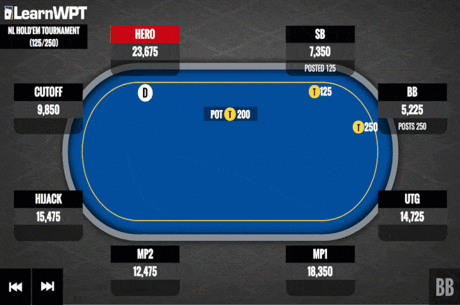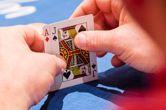How and When to Use Aggression Effectively in No-Limit Hold'em

In poker, the general advice to "be more aggressive" is often given. Regardless of the variant, players are often told that the benefits of playing aggressively are many, and that failing to be aggressive reduces our chances of success.
Less often provided are specifics regarding how and when to apply such aggression. Usually if any elaboration of the point follows it ends with a brief discussion of why aggressive players tend to enjoy more success than those who are passive.
Betting and raising are actions that inform an aggressive style, while checking and calling are ones that inform a passive style. Both should be understood as distinct from a player being "loose" or "tight," terms which instead refer to the frequency of hands played (loose players play a high percentage of hands; tight players play a low percentage of hands).
We're told that aggressive players — those who often choose to bet or raise when given the chance to do so — don't have to wait for good hands to win pots, but can also win with lesser hands when their bets cause others to fold. Instead of only winning pots by making better hands, aggressive players have a second way to win — by getting others to fold (and sometimes even fold better hands).
Such advice is generally true and works as a good starting point for explaining why an aggressive style is preferable to a passive one. However, the general encouragement to bet or raise rather than check or call still lacks specific guidelines regarding how to be aggressive as well as when being aggressive is an advantageous strategy.
How to Be Aggressive
It's a little easier to talk about how to apply aggression — that is, to identify certain actions as aggressive — than it is to explain when to be aggressive. With regard to no-limit hold'em, players can distinguish themselves as aggressive in a number of ways, starting before the flop.
Those who open-raise and three-bet a lot often stand out as aggressive. Even new players soon discover only a relatively small percentage of starting hands are strong enough with which to raise or reraise, thus when players raise or reraise more often than such a percentage suggests, they are demonstrating preflop aggression.
Players who routinely raise to attack preflop limpers are also showing aggression, as are those who employ the "squeeze play" (i.e., reraising over a raise and call).
On the flop, aggression again can be exhibited in several forms. A continuation bet that keeps the initiative with the preflop raiser is one example. So, too, is check-raising (an especially aggressive move). Floating the flop is another move aggressive players make, one that most often involves calling a flop bet with position despite having a marginal or weak hand in order to set up betting or raising as a bluff on a later street.
The turn is also where a check-raise can occur, among other types of aggressive moves. A bet or raise here might automatically be viewed as aggressive depending on the board and situation. For example, the turn card might complete a possible draw or create new ones, making the board "scary" and thus causing any bet or raise to appear that much more aggressive.
The river can likewise bring such "scary" cards that potentially improve drawing hands. Whether they do or not, a big river overbet — either for value or as a bluff — would be an example of aggression.
All of these moves are obviously situation dependent. In any case, a player making them frequently enough becomes marked as aggressive, and if the moves are well-timed and effective that player also stands out as a difficult one against whom to play.
When to Be Aggressive
Perhaps you've heard the very basic advice to beginners to "bet if they check," especially on the flop and regardless of their own hand strength. The idea is to encourage new players learn to be aggressive at times when aggression is warranted and likely an advantageous strategy.
More often than not we're dealt unpaired cards before the flop (pocket pairs only come once every 17 hands). And with unpaired cards, our chance of making a pair or better on the flop is a little worse than 1 in 3. That means when a player checks the flop, most of the time that player has yet to make a pair or better, which in turn suggests if we bet — that is, if we are aggressive rather than passive — we'll win the hand.
That's not a bad start to figuring out when to be aggressive. In fact, let's make it the first item on a short list of instances when it is likely good to employ those aggressive actions described above.
1. When your opponent shows weakness
As noted, checking after the flop is a sign of weakness. So, too, are actions like preflop limping, making small leading bets, check-calling, and other examples of passive play. Being aggressive is often a good response.
Incidentally, by "weakness" here I am referring to hand strength and not the quality of the player. Weak players can often be loose — e.g., the "calling station" against whom it generally isn't going to be a good idea to bluff with air.
2. When your opponents are tight
Again, be careful not to confuse being "tight" with being "passive." A tight player plays relatively few hands, and thus is often only getting involved with very strong starting hands and/or continuing with strong made hands postflop. A passive player, meanwhile, likes to check and call (and with a wide range of holdings).
Against overly tight players, aggressive players can often thrive by picking up pots without having to make hands themselves. The key, of course, is to be aware when the tight player finally starts fighting back against all of your preflop raises and three-bets and postflop pot-stealing bets — that's when it's likely a good time to ramp down the aggression and let hands go.
3. When your opponents think you are tight
Perhaps you really are a tight player — indeed, a "tight-aggressive" style can definitely be a winning one, if smartly applied. Or you've just encountered a bad run of starting hands and haven't been able to get involved for a while. In any case, if you think your opponents suspect you to be on the tight side, a sudden display of aggression is likely to earn respect.
In this case I'm talking more directly about bluffing than value betting. After all, you don't want to be that player who folds 20 hands then after finally picking up aces suddenly gets active only to see everyone fold. Squeeze plays, floats, check-raises, and turn and river bets on "scary" boards are all aggressive moves that when made by a seemingly tight player are more likely to earn folds, and thus can be considered as bluffing opportunities.
4. When your opponent's range is capped
Sometimes a hand plays out in such a way that your opponent very likely can only have a medium-strength hand at best while your own range of hands is much wider, including many hands that could beat your opponent. A big turn or river bet (or raise) thus becomes very difficult for your opponent to call, even if the player has an overpair or something of similar value.
We're edging into slightly advanced strategy with this example — see Gareth Chantler's article "Why So Much? An Exercise in Capping an Opponent's Range" for a fuller explanation of how an opponent's range limitation can be a good time to be aggressive.
5. When the game is short-handed
Finally, fewer players means you should widen your ranges for preflop raises and three-bets while also looking for more spots postflop to be aggressive.
Hopefully this overview provides a better, more concrete plan for players looking to start incorporating more aggression into their no-limit hold'em games. Learn what aggressive poker is (the "how"), and especially work on recognizing spots both before and after the flop where it is most effective to employ such aggression (the "when").









